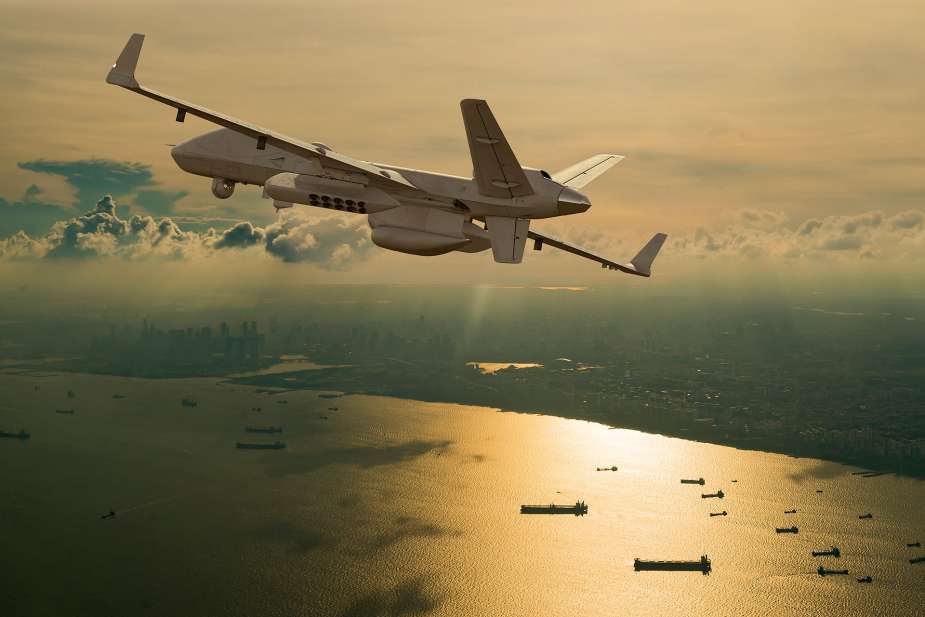Breaking news
Taiwan Plans to Receive US-Made MQ-9B Drones in 2026.
Taiwan plans to enhance its aerial surveillance and defense capabilities with the arrival of its first set of MQ-9B unmanned aerial vehicles (UAVs) from the United States in 2026, with a total of four drones expected by 2027. This information was revealed in an e-mail from a US spokesperson.
Follow Army Recognition on Google News at this link

Taiwan plans to enhance its aerial surveillance and defense capabilities with the arrival of its first set of MQ-9B unmanned aerial vehicles (UAVs) from the United States in 2026. (Picture source: General Atomics)
The United States Department of Defense announced on March 12 that General Atomics Aeronautical Systems had been contracted to provide Taiwan with four MQ-9B UAVs, along with two certified ground control stations, spare parts, and the necessary support equipment. The project is expected to be completed by August 11, 2027.
Eric Gomez, a senior fellow at the Cato Institute, suggested in an interview with CNA that Taiwan is likely acquiring the SeaGuardian version. He referred to a report from the United States Defense Security Cooperation Agency to support his claim.
Gomez emphasized the MQ-9B's capabilities for long-duration and high-altitude operations, making it ideal for comprehensive and sustained intelligence, surveillance, and reconnaissance missions. He indicated that the use of MQ-9Bs could reduce Taiwan's dependence on manned fighter aircraft for surveillance missions, address activities of the People's Liberation Army (PLA) near Taiwan, and counter intrusions into Taiwan's air defense identification zone (ADIZ).
The MQ-9B is an advanced unmanned aerial vehicle (UAV). With a wingspan of 79 feet (about 24 meters) and a length of 38 feet (about 11.7 meters), this UAV has an imposing size. It is powered by a Honeywell TPE331-10 turboprop engine, which contributes to its aerial performance.
Regarding maximum takeoff capacity, the MQ-9B can reach a gross weight of 12,500 pounds (about 5,670 kilograms), supported by a fuel capacity of 6,000 pounds (about 2,721 kilograms). This fuel capacity is essential for its long endurance missions, allowing it to stay in flight for over 30 hours, depending on the configurations.
The MQ-9B can carry a significant payload, divided between internal and external capacities. It is capable of carrying up to 800 pounds (about 363 kilograms) inside and 4,750 pounds (about 2,155 kilograms) outside, distributed across 9 external hardpoints, with eight mounted on the wings and one at the center. These attachment points allow the MQ-9B to be equipped with a variety of tools and sensors for diverse missions.
The MQ-9B also excels in its ability to operate at altitudes above 40,000 feet (more than 12,200 meters), allowing it to fly over conflict zones or areas of interest at a safe distance. Its maximum cruise speed reaches 210 true knots (KTAS), and it can cover a distance of more than 5,000 nautical miles, varying according to the mission configuration. This combination of endurance, payload capacity, and range makes the MQ-9B a versatile and valuable tool for surveillance, reconnaissance, and other operational tasks under various conditions.
Despite the MQ-9B's ability to be equipped with various weapon systems and its robust capabilities, Gomez warned that the UAV lacks stealth features and is susceptible to detection and interception, particularly at higher altitudes. He expressed concerns about the MQ-9B's survivability in potential high-intensity conflicts with the PLA's sophisticated air defense systems.


























